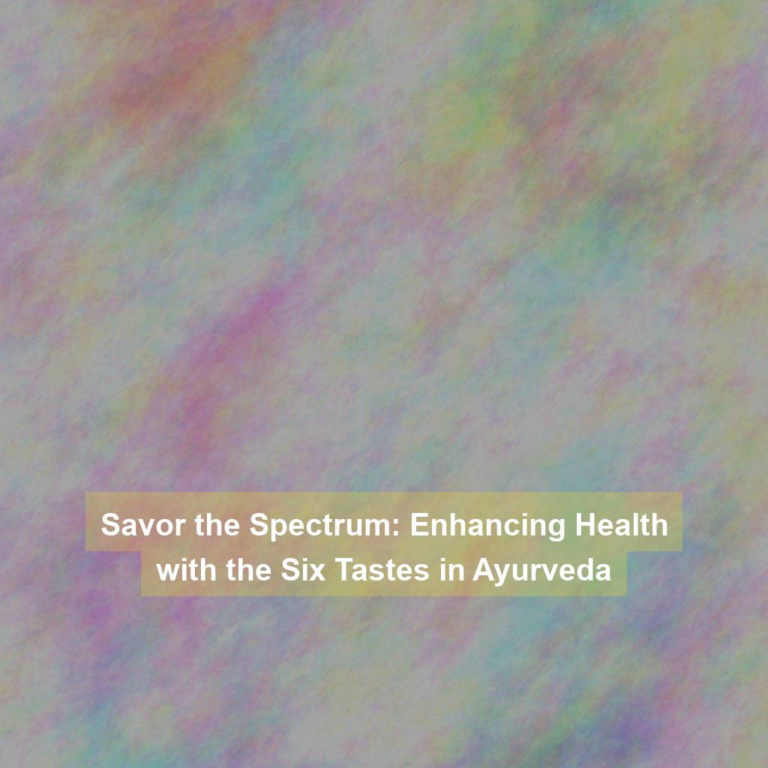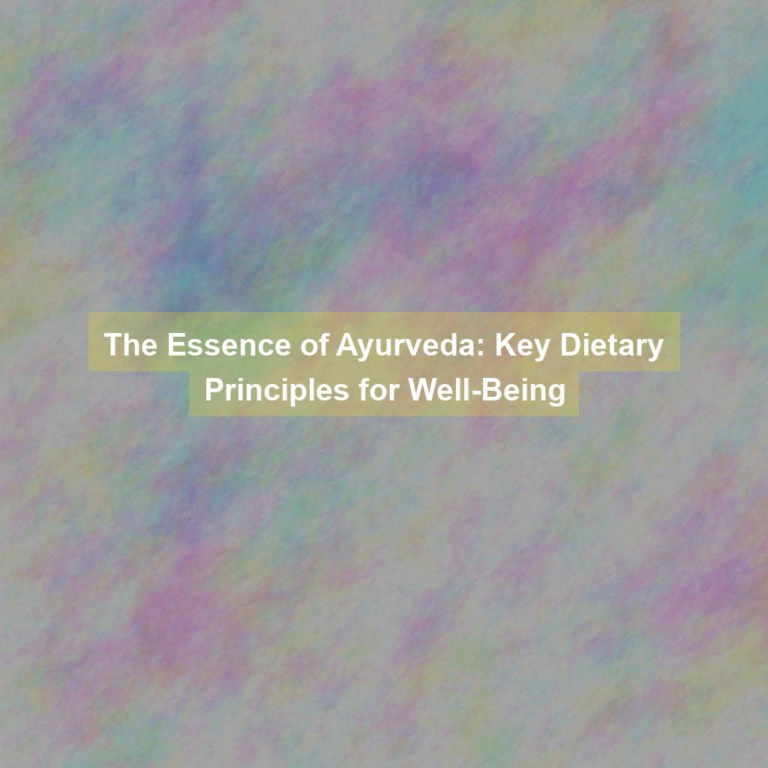In Ayurveda, the art of food combination is a crucial aspect of maintaining balance and harmony within the body.
Imagine starting your day with a breakfast that includes fresh fruit and yogurt, only to feel heavy and bloated afterwards. Why does this happen, and how can you avoid it?
Understanding the principles of food combinations in Ayurveda can provide valuable insights into optimizing digestion, nutrient absorption, and overall well-being.
Understanding Ayurvedic Principles of Food Combinations
Understanding Ayurvedic Principles of Food Combinations involves considering the interactions between different foods and their impact on digestion and overall well-being. In Ayurveda, food is seen as medicine, and the combination of foods is carefully considered to support optimal digestion and health.
According to Ayurvedic principles, each food has its own taste (rasa), energy (virya), and post-digestive effect (vipaka), and when combined, these factors can affect the body in different ways. For example, combining certain foods may lead to the production of harmful toxins (ama) in the body, while other combinations can enhance digestion and nutrient absorption.
Ayurveda emphasizes the importance of eating according to your body type, known as dosha, which can be Vata, Pitta, or Kapha. Each dosha has its own unique digestive tendencies and tolerances, so understanding your dosha can help you make informed choices about food combinations that best support your individual constitution. For instance, individuals with a Vata constitution may benefit from warm, grounding foods, while those with a Pitta constitution may thrive on cooling, hydrating foods.
The Science Behind Digestive Fire and Food Pairing
Exploring the relationship between digestive fire and food pairing reveals the intricate mechanisms that influence optimal digestion and nutrient assimilation in Ayurveda. In Ayurveda, the concept of Agni, or digestive fire, plays a crucial role in the body’s ability to process and absorb nutrients from the foods we consume.
The strength of your digestive fire determines how efficiently you can extract nutrients from the foods you eat. When it comes to food pairing, considering the impact on Agni is essential. Certain food combinations can either stoke or dampen the digestive fire, influencing the overall digestion process. For example, pairing foods that are difficult to digest together can overwhelm the digestive system, leading to the production of toxins and hindering the absorption of nutrients.
On the other hand, combining foods that complement each other and support the digestive process can enhance nutrient absorption and promote overall well-being. Understanding the science behind digestive fire and food pairing empowers you to make mindful choices that support optimal digestion and nutrient assimilation.
Exploring Balanced Food Combinations for Dosha Harmony
To achieve dosha harmony through balanced food combinations, consider the specific qualities of foods and their effects on your body’s constitution. In Ayurveda, each dosha ‘ Vata, Pitta, and Kapha ‘ has its own unique characteristics, and consuming foods that balance these qualities can help maintain harmony within your body.
For Vata dosha, prioritize warm, cooked, and grounding foods like root vegetables, grains, and nuts to counteract its cold, light, and erratic nature. To pacify Pitta dosha’s hot, sharp, and intense attributes, opt for cooling, hydrating foods such as cucumbers, sweet fruits, and leafy greens. Kapha dosha, with its heavy, cold, and stable tendencies, benefits from light, warming foods like spices, legumes, and bitter vegetables.
When combining foods, aim for a balance of tastes and qualities to ensure that no single dosha is aggravated. For example, if you have a Pitta constitution, pairing spicy foods with cooling ones can help maintain equilibrium. Additionally, consider your unique constitution and any imbalances you may have when creating balanced food combinations to support overall dosha harmony.
Enhancing Nutrient Absorption Through Synergistic Food Combinations
Consider how specific food combinations can enhance your body’s absorption of nutrients to optimize your overall well-being. Synergistic food combinations play a crucial role in improving nutrient absorption. For instance, pairing foods rich in vitamin C, such as citrus fruits or bell peppers, with iron-rich foods like spinach or lentils can significantly enhance iron absorption. Similarly, consuming fat-soluble vitamins like A, D, E, and K with healthy fats like avocado or nuts can aid in their absorption. Moreover, combining turmeric with black pepper helps increase the bioavailability of curcumin, the active compound in turmeric known for its anti-inflammatory properties.
Additionally, the combination of certain foods can also help in the absorption of plant-based sources of protein. For example, consuming beans or lentils with whole grains like quinoa or brown rice forms a complete protein, enhancing the overall protein absorption. Furthermore, including probiotic-rich foods such as yogurt or kefir alongside high-fiber foods can support the growth of beneficial gut bacteria, thus aiding in the absorption of essential nutrients.
Understanding and implementing these synergistic food combinations can significantly improve your body’s ability to absorb and utilize nutrients, ultimately contributing to your overall health and well-being.
Practical Tips for Creating Harmonious Meals With Ayurvedic Food Combinations
To create harmonious meals with Ayurvedic food combinations, you can balance the six tastes ‘ sweet, sour, salty, pungent, bitter, and astringent ‘ in each meal to promote overall well-being and digestive harmony.
Start by including a variety of tastes in your meals. For example, a sweet taste can come from fruits, grains, or natural sweeteners, while sourness can be derived from yogurt, citrus fruits, or fermented foods. Additionally, incorporating salty tastes through high-quality salt or salty vegetables like seaweed can be beneficial.
To add pungent tastes, consider using spices like ginger, black pepper, or chili peppers. Bitter tastes can be obtained from leafy greens, turmeric, and bitter melon, and astringent tastes from legumes, apples, or pomegranates.
Another practical tip is to eat mindfully and avoid overeating, as this can disrupt the balance of tastes and lead to digestive discomfort. By being mindful of the tastes and quantities of food in your meals, you can create a harmonious dining experience that supports your overall health and well-being.
Conclusion
So, next time you’re preparing a meal, remember the art of combination in Ayurveda. By understanding the principles of food pairing, you can create harmony and balance for your doshas.
Consider the qualities of each food and how they interact with each other, and aim for nutrient absorption through synergistic combinations.
With a little practice and intention, you can cultivate a deeper connection to your food and support your overall well-being through Ayurvedic food combinations.







